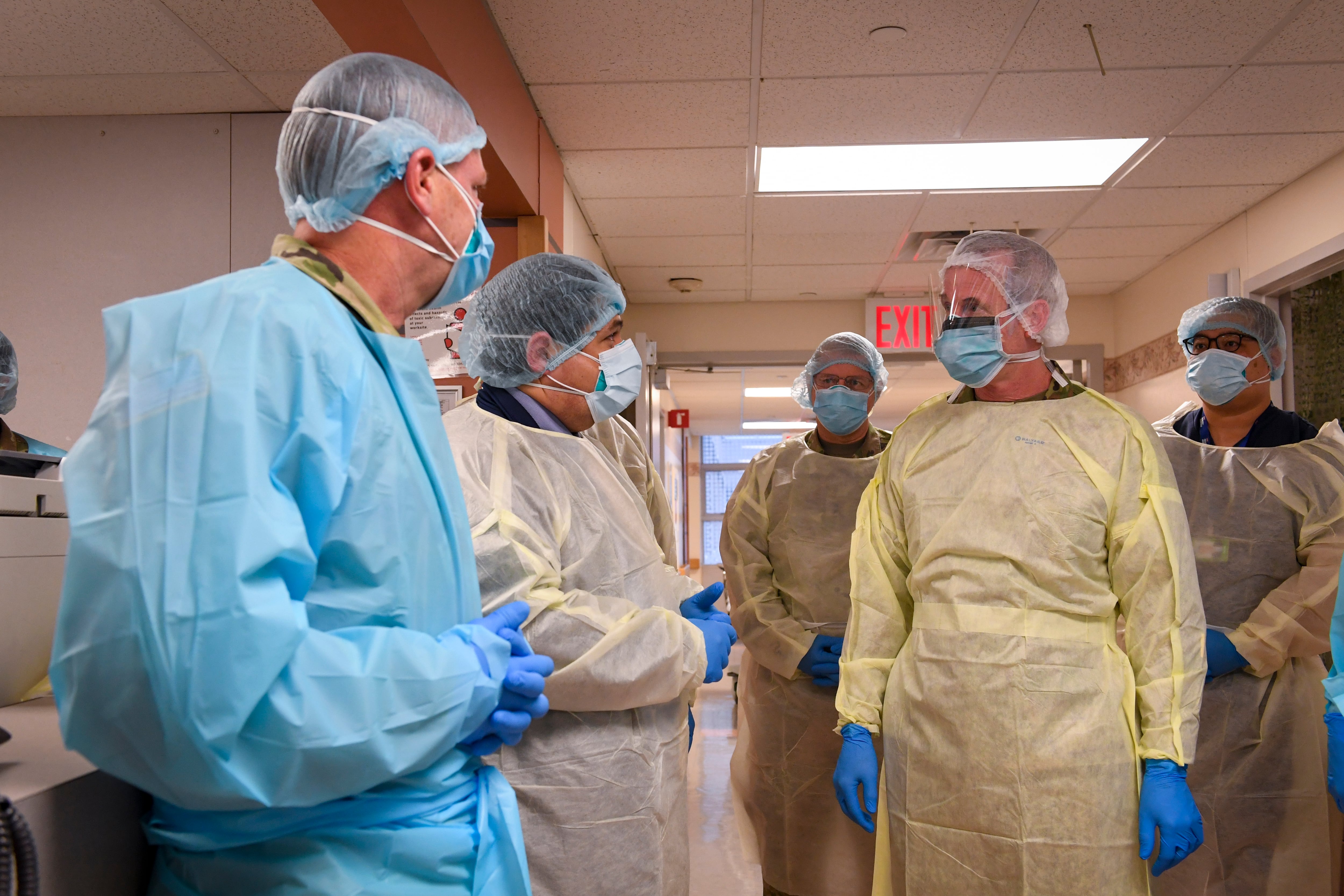WASHINGTON — A project launched by the Pentagon’s chief artificial intelligence office in response to the coronavirus pandemic has provided several lessons to help in a pivot toward developing AI tools for war.
The Joint Artificial Intelligence Center’s COVID-19 project, called Project Salus, delivered AI tools to leaders at U.S. Northern Command, with which they predicted shortfalls in food and medical supplies. With Project Salus, the JAIC focused on quick development and delivery of the tools — an effort that has taught several lessons as the center moves forward with its joint war-fighting effort and as its acting director pushes the organization to become “the world’s best software company.”
“With Project Salus, one of the key things that we pivoted on was the ability for us very quickly — in a couple weeks — to get a base product that really didn’t have a great looking [user interface] or other pieces there, but had the core functionality in the hands of NORTHCOM leaders," JAIC acting Director Nand Mulchandani said at a Sept. 10 news conference.
The leaders provides "feedback on what was working and not working,” Mulchandani added.
Project Salus focused on pandemic response through predictive logistics and is far from a war-fighting platform. Still, the effort helped inform JAIC’s leadership identify how to best support the Joint All-Domain Command and Control effort. JAIC leadership learned that platforms must directly help the commander, not only supporting staff, make decisions.
“When the commander sees the value — ‘Hey, I can re-task people from this effort over to this effort because you’ve helped me automate some of these processes’ — then it gives us a real victory,” said Army Col. Brad Boyd, the JAIC’s chief of joint war-fighting operations. “So it kind of gives us a road map for continued work in Joint All-Domain Command and Control based on the things that we learned from Salus.”
The Salus platform, Boyd said, is a piece of a larger command-and-control system. The platform allowed users to plug in their data feeds and get the answers they needed with far less human effort.
“You want to make sure that the machine is doing things well that machines do so that you can enable humans to do the things that the humans want to do. And Salus showed us that if you can automate the processes, and get the humans out of process and into reasoning, that you’re going to be successful,” Boyd said.
There’s also a cost benefit to a platform like Salus. Building a generic platform for use by multiple components — and even some federal users outside of the department — saves the JAIC money on building, owning and maintaining Salus, Mulchandani said.
“Software is one of the few areas of tech where the more you build and the more you deploy, the cheaper it gets,” Mulchandani said. “We’ve got to get great about that here at the DoD.”
Jane Pinelis, the JAIC’s chief of testing and evaluation, told reporters that the project also brought the JAIC together to build a “true, integrated product team,” bringing together personnel from across several of the JAIC’s national mission initiatives to join forces to respond to the health crisis.
Mulchandani called the effort “an incredible fusion” of expertise from across the JAIC.
The effort was further applauded by top department IT leadership at the DoD AI Symposium held Sept. 9-10. Dana Deasy, the chief information officer for the department, pointed to the JAIC’s work on Project Salus as an example of how the organization will need to operate to be successful in the future.
“I believe the true long-term success of the JAIC will depend on how the organization adapts and delivers real-world solutions when the strategic landscape and priorities change,” Deasy said at the summit on Sept. 10.
Andrew Eversden covers all things defense technology for C4ISRNET. He previously reported on federal IT and cybersecurity for Federal Times and Fifth Domain, and worked as a congressional reporting fellow for the Texas Tribune. He was also a Washington intern for the Durango Herald. Andrew is a graduate of American University.








